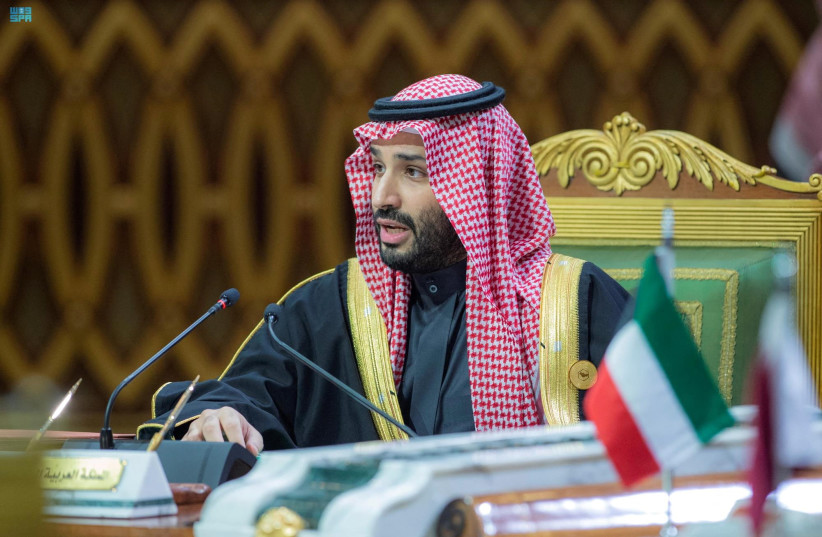US has aided in covering up Saudi mass murder – opinion
It’s bad enough that the Biden administration has responded so weakly to Saudi Arabia’s massacres of African migrants. But now it turns out that US officials have been covering up what they knew, and when they knew it.Last week, The New York Times reported that the administration has been aware, since last October, that Saudi Arabian border guards have slaughtered “hundreds, perhaps thousands” of unarmed African civilians. US officials responded that they found out about it only in December.
But now, in response to public pressure, the State Department has admitted that it actually knew about the killings months earlier, in the summer of 2022. The administration also now acknowledges that the US has been training Saudi border security forces, although it claims the training was provided only to maritime guards, not the border guards who have been carrying out the killings.
Human rights groups say the unarmed African migrants approached the Saudi border in the hope of finding work or receiving asylum from persecution; the Saudis responded with gunfire, mutilations, and sexual atrocities.
What has the Biden administration done with the information? US officials “asked Saudi Arabia to investigate the episodes,” the Times reports. “Saudi officials have not responded.”
While the murders do not meet the official definition of genocide, the administration’s initial cover-up just when it learned of the atrocities is painfully reminiscent of how the Roosevelt administration covered up its own suppression of information about the mass murder of Jews in Nazi Europe. That cover-up began after US diplomats in Switzerland began forwarding information about the killings from Jewish activists in Switzerland to American Jewish leaders in late 1942 and early 1943.
 Saudi Crown Prince Mohammed bin Salman speaks during the Gulf Summit in Riyadh, Saudi Arabia (credit: VIA REUTERS)
Saudi Crown Prince Mohammed bin Salman speaks during the Gulf Summit in Riyadh, Saudi Arabia (credit: VIA REUTERS)The Roosevelt cover-up
The Roosevelt administration feared the information might lead to pressure for US rescue action. So in February 1943, the State Department sent a cable, numbered 354, to US officials in Switzerland, ordering them to stop transmitting information “to private persons” in the United States.
The cable specifically stated that it was in response to an earlier cable from Switzerland, numbered 482, which had contained details of Nazi atrocities. Ten months later, a Treasury Department official named Josiah E. Dubois, Jr. discovered what the State had done. Dubois surreptitiously obtained copies of both 354 and 482.
Because of the vague wording of 354 – it mentioned the number 482 but didn’t quote its contents – the true purpose of 354 could be understood only by reading it in conjunction with 482. Dubois persuaded Treasury Secretary Henry Morgenthau, Jr. to ask for a copy of 354.
Assistant Secretary of State Breckinridge Long didn’t want Morgenthau to see the full text of 354 because it would lead him to ask for 482, so he tried to cover it up.
He “deleted the cross-reference [in 354] to cable 482,” Dubois later recalled. “It was an obvious, deliberate deception.” Without the reference to 482, “all it said was that messages such as those should no longer be sent – it didn’t mean anything.”
Dubois’s expose of Long’s cover-up triggered an all-out conflict between the Treasury and the State. He said that Morgenthau once told him that Long’s “deliberate attempt to deceive him… was the most shocking incident that he had ever experienced during his time in office.”
Consequently, in early 1944, Morgenthau summoned the wherewithal to directly confront president Franklin Delano Roosevelt about the State’s actions. FDR, already under mounting congressional and public pressure to take rescue action, realized that the growing scandal could hurt him in that year’s election. So the president quickly agreed to Morgenthau’s request to establish the War Refugee Board, a new US agency devoted to rescuing refugees.
It was late, it was little, and it faced an array of obstacles. FDR gave the new agency almost no funding – 90% of its budget was supplied by private Jewish groups. The State Department and War Department rarely cooperated with the Board’s initiatives. Nonetheless, the Board undertook heroic efforts during the last 15 months of the war, including its sponsorship of the life-saving work of Raoul Wallenberg. Altogether, the War Refugee Board played a major role in saving some 200,000 Jews from the Nazis.
Louis Brandeis, in his famous essay advocating transparency, asserted that “sunlight is said to be the best of disinfectants,” as a metaphor for exposing wrongdoing. Fear of “sunlight” forced Roosevelt’s hand in 1944.
Hopefully the sunlight shed on the current US State Department cover up of when it learned of the Saudis’ killings will embarrass the Biden administration into putting immediate and meaningful pressure on Saudi Arabia to halt the massacres.
The writer is founding director of The David S. Wyman Institute for Holocaust Studies and author of more than 20 books about Jewish history and the Holocaust. His latest is America and the Holocaust: A Documentary History, published by the Jewish Publication Society & University of Nebraska Press.





Comments are closed.